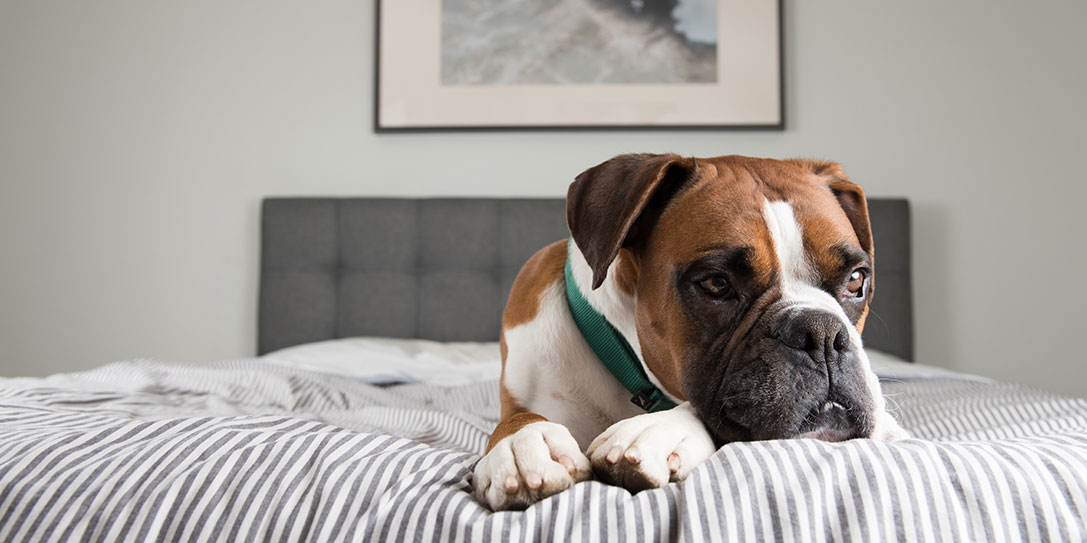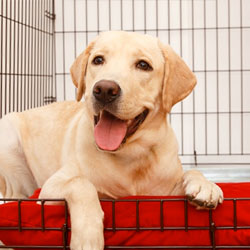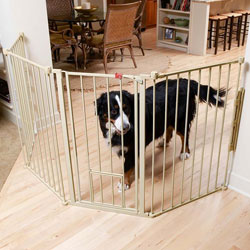
When the pandemic started, the rate of puppy adoptions and purchases increased across the country surged, bringing about the term “pandemic puppy.”
Many people saw the increase in at-home time as an opportunity to finally raise a puppy and have a creature to keep them company during the lockdown. Of course, dogs can be the best company! They love to cuddle, make great co-pilots on a quick coffee run, and always know how to make us smile. But, what happens when you can’t spend as much time with them as you did during those work-from-home pandemic days?
If you’ve been able to spend a lot more time at home with your dog, you’ve probably developed a pretty nice routine. And dogs LOVE routines. They get used to the schedule you set. Here’s the flipside—changes in that schedule can cause separation anxiety and other behavior issues. Over the past several months, we’ve seen a trend where dog owners return to work, and their pups who have never been left home alone are struggling. Some doggos deal with bouts of separation anxiety, while others take their “Home Alone” role too seriously and get up to all sorts of shenanigans (Kevinnn!!).
We understand how frustrating this can be! So, we’ve rounded up six survival tips to help you and your pandemic puppy make the transition.
What To Do With Your Pandemic Puppy Once You’re Back In The Office
 1. Consider Crate Training
1. Consider Crate Training
Some people believe that putting a dog in a crate is uncomfortable and unkind. And, if that meant you kept them in there for needless amounts of time, we’d agree with you. Most people don’t know that with gentle and positive training, many dogs actually love their crates because it’s a space where they feel safe. According to the Humane Society of the United States, crate training takes advantage of your dog’s instincts to seek out a comfortable, quiet, and safe place when the environment around them becomes too loud or overwhelming. Many dogs we train with crate training will later choose to sit or sleep in their special space. Crate training is a great way to establish a “safe zone” where your dog can feel protected and can’t get into trouble while you’re away.
The key to effective crate training, according to the American Kennel Club, is to create positive associations with the crate through the use of treats and games. While it can take some time and patience to train your pup, the results are worth it!
For more information on crate training, check out the advice our fearless leader Malaika Heinbaugh gave to readers of the Northern Nevada Business Weekly.
2. Practice being away from your pandemic puppy
If you have a few weeks before heading back to school or work and you anticipate schedule changes for your dog, try making some of those changes gradually to help ease the shift. For example, if you’ve been walking your dog at 2 p.m. but know you won’t be able to do walks now until 5:30 p.m., start walking your four-legged friend a few minutes later each day. This gradual adjustment over a few weeks can help your dog get used to the changes in a positive way.
 3. Puppy-proof your home
3. Puppy-proof your home
If it’s been a while since you’ve scanned your home for potential hazards for your dog, now is the time. Before heading back to the office, thoroughly review your space and consider ways that you can both protect your dog and your stuff. Installing gates to block off any off-limit areas like down hallways or certain rooms is a great way to keep your pup out of trouble. Remove temptations by putting locks on garbage cans and cabinets or putting things away in higher places.
 4. Get techy
4. Get techy
There are several high-tech solutions designed with dog owners in mind. If you want to deter your dog from cuddling up on your couches and chairs, try a ScatMat. If you know that both you and your doggo will have some separation anxiety, try a Furbo. You’ll be able to talk to your dog through the two-way speaker, see them in full HD, and even throw them a treat.
5. Consider doggy daycare
If you’re the only friend your pandemic puppy knows, they might benefit from the socialization and activities that come from a day at doggy daycare. Your canine companion will get time to play and socialize with all the supervision they need in a safe environment. A professional, well-run dog daycare can help you get back to work while also ensuring that your pup has a fun place where they can be a dog.
6. Get In-Home Training Lessons
One of the best ways to make your dog more comfortable with being home without you is by getting them the training they need. With in-home dog training, one of Dog Gone Amazing’s dedicated dog trainers will bring the same top-level instruction we offer at our education center directly to you. We’ll come to you and help you get set up to go back to work and school. We’ll help your dog work on the specific needs and skills they will use to make good choices and stay cool and calm while you’re away. It’s a convenient and easy way to help your dog learn better manners and obedience without traveling away from home.
By preparing your pandemic puppy for some extra alone time, you can set their mind at ease and take care of the creature who took such good care of you during those long work from home days.
